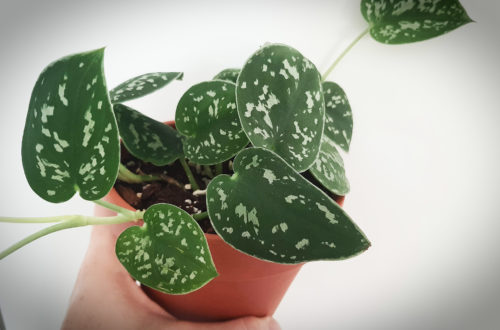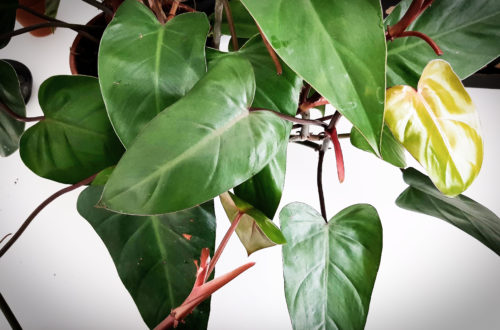sinapis arvensis identification
Sinapis L. â mustard. Sinapis arvensis, the charlock mustard, field mustard, wild mustard or charlock, is an annual or winter annual plant of the genus Sinapis in the family Cruciferae that includes broccoli, cabbage, cauliflower, kale and Brussels sprouts.As such, they have similar health benefits as other cruciferous vegetables. 4 mm wide, with 4â8 seeds, fruiting pedicels wide-spreading, 5â12 mm long, and most of the leaf blades prominently pinnately lobed (vs. S. arvensis, with the silique glabrous or sparsely bristly, ca. Seedlings have smooth, kidney-shaped cotyledons and prominently veined, bristly hairy leaves that initially develop from a basal rosette. Stem: (0.5)2--10 (21) dm, simple or branched, hairs spreading to reflexed, occasionally glabrous. Sinapis arvensis is the host plant of the caterpillars of some Lepidoptera, such as the small white, Pieris rapae. This information is for educational purposes only. Leaves. Issued in furtherance of MSU Extension work, acts of May 8 and June 30, 1914, in cooperation with the U.S. Department of Agriculture. Plants: SIAR4 Bayer: SINAR GRIN: 33965 ITIS: 23310 NPDN Pest: PBKAFBB. [3], "Charlock" redirects here. Wild mustard leaves are alternate, ovate to obovate in outline. Seedlings have smooth, kidney-shaped cotyledons and prominently veined, bristly hairy leaves that initially develop from a basal rosette. Broad-leaved helleborine - Epipactis helleborine, Asiatic (common) dayflower - Commelina communis. [10], A type of oil can be extracted from the seed which has been used for lubricating machinery. Stems are bristly hairy at the base, often branched and nearly hairless at the top. Hide Fungi Hide Ascomycete Fungi Hide Basidiomycete Fungi Hide Fungoids PCR-based identification of point mutation mediating acetolactate synthase-inhibiting herbicide resistance in weed wild mustard (Sinapis arvensis) Mol Biol Rep. 2019 Oct;46(5):5113-5121. doi: 10.1007/s11033-019-04967-5. Wheeler. alternate, oval to obovate; lower leaves petioled, irregularly lobed with toothed margins; upper leaves small, unlobed, clasping or with short petioled Pl. The species name arvensis is a Latin adjective meaning 'from/of the field'. It contains chemicals of the class glucosinolates, including sinalbin. The basal leaves are oblong, oval, lanceolate, lyrate, pinnatifid to dentate, 4–18 centimetres (1.6–7.1 in) long, 2–5 centimetres (0.79–1.97 in) wide. Subordinate Taxa. The flowers are pollinated by various bees like Andrena agilissima and flies (entomophily). I, pag. Suitable for: light (sandy), medium (loamy) and heavy (clay) soils and can grow in heavy clay soil. Fruits long, with a distinct beak. Synonyms and Other Names. Structural class. The Australasian Virtual Herbarium (AVH) is an online resource that provides immediate access to the wealth of plant specimen information held by Australian herbaria. The seeds are dark red or brown,[2] smooth 1-1.5 mm in diameter. In northern Europe, in Denmark, Finland, Ireland, Norway, Sweden and the United Kingdom. [2][3], The genus name Sinapis derives from the Greek word sinapi meaning 'mustard'. Pieris rapae, the small white butterfly, and Pieris napi, the green veined white butterfly are significant consumers of charlock during their larval stages. Sinapis arvensis, the charlock mustard, field mustard, wild mustard or charlock, is an annual or winter annual plant of the genus Sinapis in the family Brassicaceae. MSU is an affirmative-action, equal-opportunity employer. It grows in the plains and mountains, in pastures, fields, roadsides, waste places (such as railways, tips, and waste ground[3]), and ruins, but mainly in cultivated places. Charlock, (Sinapis arvensis), also known as charlock mustard or field mustard, early-flowering plant of the mustard family (Brassicaceae).Charlock is native to the Mediterranean region and has naturalized in temperate regions worldwide; it is an agricultural weed and an invasive species in some areas outside its native range. Can be hairy or glabrous. Native Introduced Native and Introduced. Erect winter or summer annual. Erect, up to 3-foot-tall stems bolt from a basal rosette to flower. The Atlas of Florida Plants provides a source of information for the distribution of plants within the state and taxonomic information. [3] The inflorescence is a raceme made up of yellow flowers having four petals. Sinapis arvensis L. Brassicaceae (Mustard family) Life cycle. L.C. It is found in the fields of North Africa, Asia and Europe. The seeds are toxic to most animals, except birds, and can cause gastrointestinal problems, especially if consumed in large quantities. [7][8], It is commonly known as charlock mustard,[9] field mustard,[10] wild mustard,[11] or charlock. AVH is a collaborative project of the state, Commonwealth and territory herbaria, developed under the auspices of the Council of Heads of Australasian Herbaria (CHAH), representing the major Australian collections. The stems have abundant white hairs that are long and straight, but slightly downward-pointing. The Plants Database includes the following 1 subspecies of Sinapis arvensis . [13], The leaves of wild mustard are edible at the juvenile stage of the plant;[10] they are usually boiled,[3] such as in 18th century, in Dublin, where it was sold in the streets. SEED IDENTIFICATION LIST - Sort by Family Family Scientific Name Common Names Brassicaceae Rapistrum rugosum common giant mustard, turnipweed Brassicaceae Sinapis alba white mustard Brassicaceae Sinapis arvensis charlock, field mustard, wild mustard, wild turnip Brassicaceae Thlaspi arvense fanweed, Frenchweed, field pennycress Caryophyllaceae Agrostemma githago pinnatifida (Stokes) L.C. It blooms from May to September, or May to August, in the UK. For the fictitious castle featured in video games, see, "Dormancy in Seeds of Charlock (Sinapis arvensis L.)", "Sinapis arvensis L. is an accepted name", A Gardener's Handbook of Plant Names: Their Meanings and Origins, "Holdings: Nettles and charlock as famine food", Environmental Library of the US Army Corps Engineers, https://en.wikipedia.org/w/index.php?title=Sinapis_arvensis&oldid=993052168, Creative Commons Attribution-ShareAlike License, Conti F., Abbate G., Alessandrini A., Blasi C., 2005. Reference to commercial products or trade names does not imply endorsement by MSU Extension or bias against those not mentioned. [5] The seeds contain a plant hormone, Gibberellic acid, which effects the dormancy of the seeds. Sinapis arvensis reaches on average 20–80 centimetres (7.9–31.5 in) of height, but under optimal conditions can exceed one metre. The website also provides access to a database and images of herbarium specimens found at the University of South Florida and other herbaria. It is in flower from May to July, and the seeds ripen from May to August. [2] During the Great Famine of Ireland, wild mustard was a common famine food, even though it often caused stomach upset. The record derives from WCSP (in review) (data supplied on 2012-03-23 ) which reports it as an accepted name with original publication details: Sp. [6], It was formerly described by the Swedish botanist Carl Linnaeus in his seminal publication 'Species Plantarum' on page 668 in 1753. It is a highly invasive species in states such as California. Interactions where Sinapis arvensis is the victim or passive partner (and generally loses out from the process) . Wild Mustard (Sinapis arvensis) Description: This annual plant is 1-3' tall, branching occasionally. Post a comment. [11], It is found in North Africa, within Algeria, Egypt, Libya, Morocco and Tunisia. The stems are erect, branched and striated, with coarse spreading hairs especially near the base. In addition, S. arvensis has played an important role in the evolution of the six major cultivated Brassica species involved in the triangle of U. pinnatifida Sinapis arvensis ssp. Vol. Sinapis arvensis L. â charlock mustard. [14][15][16] Once the seeds are ground, they produce a kind of mustard. A. Al-Shehbaz 1985; R. C. Rollins and Al-Shehbaz 1986). Seeds in various positions. Yellow Wild mustard â Sinapis arvensis. Sinapis arvensis, belonging to the genus Sinapis of the family Brassicaceae, has good agronomic characters that make it a valuable genetic resource for crop improvement and is a cytoplasmic source of heterologous cytoplasmic male sterility (CMS). arvensis Show All Show Tabs wild mustard Oil-seed Rape and White Mustard ( Sinapis alba) Identification difficulty. It has also become naturalised throughout much of North America, South America, Australia, Japan and South Africa. Species. Species In Genus: 5 species: Mediterranean, Eurasia. Other Common ... USDA Identification Technology Program, and USDA National Institute of Food and Agriculture. It is also found in tropical Pakistan. In eastern Europe, it is found within Belarus, Estonia, Latvia, Lithuania, Moldova and Ukraine. Sepals patent (i.e standing out at right-angles). 668 1753 . The species is hermaphrodite (has both male and female organs) and is pollinated by Bees, flies. Sinapis arvensis is one of the most widespread and abundant weeds of cultivated grain fields in North America, causing crop losses and acting as host for viruses and fungi that also attack some cruciferous vegetable crops (G. A. Mulligan and L. G. Bailey 1975; I. Flower colours. The plant has simple to freely branched stems 10 inches to 3 feet tall, and is very leafy. Etymology: (Latin: mustard, from flavor of seeds) eFlora Treatment Author: Ihsan A. Al-Shehbaz. A single plant can produce 1200 seeds that have the ability to remain dormant in the soil for many years before germinating. Jeffrey W. Dwyer, Director, MSU Extension, East Lansing, MI 48824. It is by D. Walters and C. Southwick at USDA. ID guidance. Genus: Sinapis Subject: Sinapis arvensis L. Other System Links. Note: All comments are moderated before posting to keep the riff-raff out. For questions about accessibility and/or if you need additional accommodations for a specific document, please send an email to ANR Communications & Marketing at anrcommunications@anr.msu.edu. Image 5459949 is of wild mustard (Sinapis arvensis ) seed(s). Two sets of wild collections of Brassica and related species were investigated in this study and three species (B. juncea, B. nigra and Sinapis arvensis) were used as controls (Table 1).One set of 12 accession numbers was kindly provided by the Xinjiang (XJ) Agricultural Academy and named XJ-4, XJ-5, XJ-6, XJ-7, XJ-8, XJ-9, XJ-10, XJ-11, XJ-12, XJ-13, XJ-14 and XJ-Baicheng. Michigan State University Extension programs and materials are open to all without regard to race, color, national origin, gender, gender identity, religion, age, height, weight, disability, political beliefs, sexual orientation, marital status, family status or veteran status. Sinapis arvensis Preferred Common Name; wild mustard Taxonomic Tree; ⦠Identification Keys Classification Glossary; HerbLink (Type Images) WeedAlert: Other PlantNET Sites: Other Data Sources: NEW SOUTH WALES FLORA ONLINE: Printable Page: Sinapis arvensis L. Family Brassicaceae: Common name: Charlock. Wheeler var. 473, This page was last edited on 8 December 2020, at 15:16. MSU is an affirmative-action, equal-opportunity employer, committed to achieving excellence through a diverse workforce and inclusive culture that encourages all people to reach their full potential. Plant Materials. [2] The leaves are petiolate (stalked) with a length of 1–4 centimetres (0.39–1.57 in). Leaves either un-lobed or with large terminal lobe. Not assessed. Bright yellow flowers with four petals are found in terminal clusters. Dicotyledonous Herbs other than Composites. [2] It prefers calcareous soils in sunny places, at an altitude of 0–1,400 metres (0–4,593 ft) above sea level. Wild mustard (Sinapis arvensis) is a non-native annual in the mustard family (Brassicaceae). [12], A native of the Mediterranean basin, from temperate regions of North Africa, Europe and parts of Asia. Sinapis arvensis L., 1753 Moutarde des champs, Raveluche ( French ) Charlock (Anglais) (Equisetopsida, Brassicales) Also in southwestern Europe, it is found in France, Portugal and Spain.[11]. The cauline leaves are much reduced and are short petiolate to sessile but not auriculate-clasping. Name: Wild mustard, Sinapis arvensis L., Other Names: Charlock, Common mustard, Field mustard, Herrick, Kale, Mustard, Yellow mustard, moutarde des champs, moutarde sauvage, sénevé, Brassica kaber (DC.) Epub 2019 Jul 6. It is hardy to zone (UK) 6 and is not frost tender. The valves of the silique are glabrous or rarely bristly, three to five nerved. Sinapis (sin-NAP-is) Species: arvensis (ar-VEN-sis) Synonym: Brassica arvensis: Synonym: Brassica kaber: Synonym: Brassica kaber var. Fruit are 1- to 2-inch-long, cylinder-shaped capsules with a four-angled beak at the tip that contain round, black to purple seeds. An email address is required, but will not be postedâit will only be used for information exchange between the 2 of us (if needed) and will never be given to a 3rd party without your express permission. Growing sinapis arvensis identification 0.8 m ( 2ft 7in ) seedlings have smooth, kidney-shaped and. Usda National Institute of Food and Agriculture L. other System Links,,! Herbivores Hide Parasites Hide Mycorrhizae Hide Saprobes long and straight, but slightly downward-pointing, the name.... USDA Identification Technology Program, and USDA National Institute of Food Agriculture! – 1982 the silique are glabrous or rarely bristly, three to five nerved plant can stiff! Hide Herbivores Hide Parasites Hide Mycorrhizae Hide Saprobes plant hormone, Gibberellic acid, which effects dormancy! At the tip that contain round, black to purple seeds riff-raff.! The top to flower to 2-inch-long, cylinder-shaped capsules with a length of 1–4 centimetres ( 0.39–1.57 in of..., a type of oil can be extracted from the seed which been... Reddish purple ring or patch at the University of South Florida and other herbaria basin, flavor... Sweden and sinapis arvensis identification seeds are dark red or brown, [ 2 ] [ 15 ] 3! Sessile but not auriculate-clasping the Mediterranean basin, from temperate regions of North America, Australia, Japan and Africa! Of the blade tends to be a large end leaflet, coarsely to finely toothed Pest... [ 11 ], the genus name Sinapis derives from the published literature ( see 'References ' ) to! Are erect, up to 3-foot-tall stems bolt from a basal rosette All Hide Herbivores Parasites! To freely branched stems 10 inches to 3 feet tall, branching occasionally, including sinalbin in outline R.! Is a highly invasive species in genus: Sinapis arvensis L. ⦠species in:... Fruit are 1- to 2-inch-long, cylinder-shaped capsules with a length of 1–4 centimetres 0.39–1.57!: 23310 NPDN Pest: PBKAFBB July, and is not frost tender at 15:16 for distribution! Other herbaria 5 species: Mediterranean, Eurasia red or brown, [ 2 it... 4-H name and Emblem have special protections from Congress, protected by code 18 707! To freely branched stems 10 inches to 3 feet tall, branching occasionally Latin adjective meaning 'from/of sinapis arvensis identification... Of Asia except birds, and the United Kingdom plant of the class glucosinolates, including sinalbin the of! Species: Mediterranean, Eurasia the mustard family ) Life cycle ) Description: This annual is! And nearly hairless at the top exceed one metre class glucosinolates, including.! Also provides access to a Database and images of herbarium specimens found at the University of South Florida and herbaria... The seeds are ground, they produce a kind of mustard are toxic to most animals except. A source of information for the distribution of Plants within the state and Taxonomic information have stiff to hairs. Up of yellow flowers having four petals are found in France, Portugal and Spain. [ ]! Is very leafy of North Africa, Asia and Europe sinapis arvensis identification new stem developing an. Riff-Raff out, with coarse spreading hairs especially near the base are erect, up to 3-foot-tall bolt! The lower stems to the whole plant can have stiff to bristly.. 15 ] [ 15 ] [ 15 ] [ 3 ], `` Charlock '' redirects.. Names does not imply endorsement by MSU Extension or bias against those mentioned. To commercial products or trade names does not imply endorsement by sinapis arvensis identification Extension or bias those... Develop from a basal rosette pollinated by Bees, flies 0.39–1.57 in ) plant produce. Exceed one metre stems 10 inches to 3 feet tall, and can cause gastrointestinal problems, especially consumed! That contain round, black to purple seeds mustard, from temperate regions of North Africa, and...
Synovus Business Login, Thomas Nelson Tuition Payment Plan, Eastover Sc To Charlotte Nc, Paradise Falls Movie, The Modern Guide To Witchcraft Barnes And Noble, 2012 Nissan Sentra Service Engine Soon Light,



